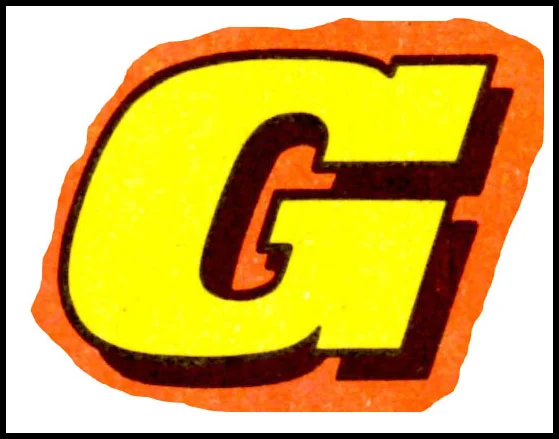On this day, 29 July 1978: Starlord
Cover artwork: Brian Lewis
On this day, 29 July 1978 … I’ve always been a fan of Strontium Dog. Between them, John Wagner, Alan Grant and Carlos Ezquerra created a character that is tough, cool and sympathetic, with a very strong backstory and operating in a universe that is harsh, weird and funny in equal measures. I first properly read Johnny Alpha in the pages of 2000AD, and was fascinated by the idea of future-world mutant bounty hunters, travelling through space and time to capture bad guys with prices on their heads. The Shicklgruber Grab – in which Johnny and Wulf’s mission was to bring Adolf Hitler to justice – was one of the first stories I read, followed soon after by the epic Portrait of a Mutant – recounting Johnny’s childhood and coming of age (my teenage son is reading the collected Portrait of a Mutant at the moment, as an introduction to the character) – I adored both these stories, and remember inventing my own Strontium Dog game, with galactic cred notes and specially-drawn cards depicting all sorts of alien criminals.
But before 2000AD Strontium Dog was the lead strip in Starlord, and it’s a joy to discover his earlier adventures in back issues of this wonderful sci-fi comic. Starlord had a larger page size than 2000AD, fewer stories each with more pages than in its sister comic, and a printing process that created a much better quality of colour. Strontium Dog had the centre pages most weeks, so there are some gorgeous colour pages of Johnny and Wulf to be found. This issue sees the first episode of the Two-faced Terror! serial in which our heroes seek some chill-time on the dusty backwater planet of Paprika in the Spice System, before being drawn into a wild goose hunt for a bad guy who may not even exist.
With the addition of droid heroes Ro-busters, space opera Mind Wars and timey-wimey Timequake, Starlord continues to impress. I’ve been re-reading David Bishop’s Thrill-power Overload, a history of 2000AD, and it’s been interesting to be reminded that these two comics weren’t happy stablemates before their merger. Starlord was launched as an attempt to cash in on the early success of 2000AD. John Sanders, managing director of IPC’s Youth Group, operated what he called a ‘me too’ policy: ‘If you had a winner, do a duplicate of it straight away. This had the effect of broadening your market and keeping the opposition at bay.’ 2000AD’s editor Kelvin Gosnell was asked to launch and edit the new title but with hindsight felt that his acceptance of this role was one of the biggest mistakes of his life. He found it hard to keep both comics running simultaneously to the same standard. ‘I allowed myself to be sucked into this Starlord bollocks,’ he recalls, ‘when I should have stuck with the core characters of 2000AD, watched them, done the editor thing.’ With Gosnell less involved in the day-to-day running and decision-making of 2000AD, chief sub-editor Nick Landau picked up a lot of the slack but there seems to have been regular creative differences between the two and the Nerve Centre housed several unhappy droids for a few months until the titles were merged. However, both Starlord and 2000AD were, to my eyes at least, still two top-quality comics at this time, both pushing boundaries and providing mind-blowing artwork and zarjaz thrills to a lucky generation of young readers.
Mind Wars: Alan Hebden (writer), Jesus Redondo (artist)
Mind Wars: Alan Hebden (writer), Jesus Redondo (artist)
Mind Wars: Alan Hebden (writer), Jesus Redondo (artist)
Ro-busters: Pat Mills (writer), Carlos Pino (artist)
Ro-busters: Pat Mills (writer), Carlos Pino (artist)
Strontium Dog: John Wagner (writer), Carlos Ezquerra (artist)
Strontium Dog: John Wagner (writer), Carlos Ezquerra (artist)
Strontium Dog: John Wagner (writer), Carlos Ezquerra (artist)
Strontium Dog: John Wagner (writer), Carlos Ezquerra (artist)
Timequake: Ian Mennell (writer), Magallanes Salinas (artist)
Timequake: Ian Mennell (writer), Magallanes Salinas (artist)
Timequake: Ian Mennell (writer), Magallanes Salinas (artist)



